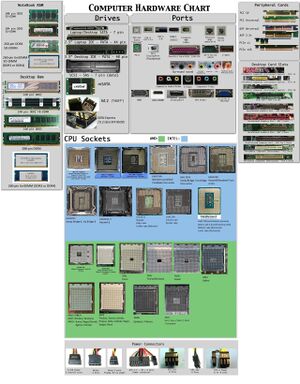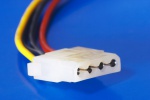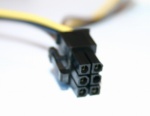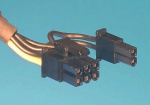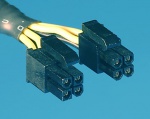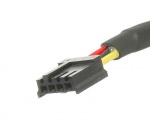We are still actively working on the spam issue.
Build a PC
Building your own desktop allows for greater customization and control. It is worth the time and effort you will expend to plan, purchase, and build your own desktop computer rather than purchase an assembled machine.
Contents
Building a desktop
Assembling all the components you decide to purchase in order to build your PC should take, on average, about a day for a first time builder. This time estimate will vary largely depending on the amount of research you have done and the components you have chosen.
Define your budget
When it is time to begin building your own personal computer, the first step to building a PC is to define a budget. You should decide how much money you are able and willing to spend on your personal computer and commit to the number you decide. Ensure you have done a fair amount of research so that you will have a realistic idea of the performance you will see for the budget you set.
Be aware that purchasing more expensive components, past a point, will yield a diminishing return. For example, A GPU that can run demanding games at 60FPS and a GPU that can run demanding games at 120FPS will not reflect this 2x factor of performance in the price (~$250 compared to a ~$650). Understand that technology progresses rapidly and prices for computer components can change very quickly over a span of a few years or shorter, so the performance of expensive hardware today will most likely be equivalent to the performance of average hardware in a couple of years.
What components do I need?
Use PCPartPicker (http://pcpartpicker.com/) to see many new components and compatibility checks.
For starters, you need to consider the following components which are necessary for a computer to function:
- CPU / Central Processing Unit
- RAM / Random Access Memory
- Motherboard
- Storage (HDD, SSD)
- PSU / Power Supply Unit
- Case / Tower
You may also want:
- Optical Drive (DVD, BluRay)
- GPU (Graphic Processing Unit)
And if you're building a completely new rig:
- Wireless Network Card
- Display / Monitor
- Keyboard
- Mouse
- Audio Output Device (Speakers, Headphones)
Selecting component retailers
Now that you have a list of the types of components you need, you'll need to decide where you're going to buy them and what that retailer offers:
- Bricks and Mortar computer shop: They'll likely have a website with their parts list/prices. You'll also need transport there and transport back with heaps of boxes (too much to carry). Paying in cash makes you pseudoanonymous. Buying at a bricks and mortar shop also means you will get your components today and can be shitposting on your new rig by tonight.
- Online retailer: Newegg and Amazon are popular. Consider the price of postage and shipping time. If you're paranoid, remember the Snowden slides of Cicso routers being intercepted and manipulated before delivery. Also consider the delivery time.
Selecting your components
With your list of required parts, you can narrow down each to specific components.
- Select your CPU first. The CPU is the "brain" of the computer and performs all computation. This will be a realitively expensive component. More cores are good for things like compiling, video encoding and gaming (e.g. i7 better than i5).
- Select your GPU next (if you're getting one). The GPU is the "graphics card" which is a necessity if you intend to do even moderate gaming. Like the CPU, your GPU will be a relatively expensive component and will likely be the most expensive in builds that are intended to be used in gaming applications. The amount of GPU memory is becoming more and more important as games become more demanding. It may be worthwhile to look up benchmarking results for different GPUs. Also note that GPU selection is very contentious, so take all advice with a grain of salt. If you're going to blow your budget on something and regret it, it's the GPU (also see GPU Selection below).
- Motherboard is next. This is the large circuit board that everything plugs into (hence "mother"). It is necessary you select a motherboard that is built with the same standard socket as your selected CPU, otherwise your computer cannot function. Higher priced motherboards support things like hardware RAID or multiple CPUs. If you're getting a GPU, make sure the motherboard has a PCIe slot (most motherboards have at least two). Chuck the motherboard model number into your search engine to find out it's stats. Chances are that you don't need to spend much of your budget on it.
- RAM is next. RAM is fast, temporary memory your computer uses that disappears when the computer is powered off. Your motherboard will support certain RAM standards (DDR3, DDR4, etc), so verify compatibility. You'll need to decide on how much RAM you want or need. In 2017, 8GB will do you fine for average use including gaming, 16GB can be beneficial in some applications such as rendering video. You'll also need to decide on a RAM frequency. Higher frequencies are for overclockers. If in doubt, go for the lowest frequency. RAM is rarely the bottleneck of performance (especially if you're using a HDD and not SSD). Don't overspend on RAM without a reason in mind.
- Storage is next. This is where your data is saved across reboots. You can go for HDDs or SSDs or both. Hard Disk Drives (HDDs) are cheaper, have higher storage capacity and are better for encryption. Solid State Drives (SSDs) are fast, expensive and have lower storage capacities. You might decide to go both ways and get a small (<1 TB) SSD for your operating system's drive (C:\ or root) and then a larger HDD for your main storage, Both drives are probably going to use SATA to connect to the motherboard. You motherboard might have some SATA 6 Gb/s "fast" slots and some "regular" 3 Gb/s slots. Change your motherboard choice if needed.
- PSU is next. This is a box that coverts your home electricity into something your computer can use. These are sold by the wattage. 300W is weak, 1000W is typically overkill. How many watts do you need? Consult a calculator:
- https://ssl-images.newegg.com/BizIntell/tool/psucalc/index.html
- http://www.coolermaster.outervision.com/
- http://extreme.outervision.com/psucalculatorlite.jsp
- If you determine your computer will require a maximum of, for example, 470W (the number produced by the calculators will be maximum required wattage) then do not purchase a 500W PSU. It is highly recommended to purchase a power supply unit that is several hundred watts, at minimum, higher than your maximum required wattage. This is so that your PSU is not performing at maximum capacity during average use or even during demanding use. Purchasing a higher wattage power supply unit will allow your PSU to run more efficiently and increase the life of the component.
- Don't forget that things you plugin to USB ports also draw power. Ranging from not much (thumbdrives) to a fair amount (printers). If in doubt, add 100W.
- Higher end PSUs often have "modular" cabling, meaning you can add cables as needed rather than be forced to stuff unused power cables away. This can help reduce clutter inside your case.
- Finally, your case (the big box that your put all the circuit boards inside of). Some cases come with bundled PSU, some don't. You now know what wattage PSU you need, so ensure if you purchase a case + PSU bundle that the included PSU meets your power needs. Cases are an aesthetic choice as well as a functional choice.
- If you're getting a GPU, check how big it is and whether it'll fit in your case. Higher end GPUs are often very large and won't fit certain cases.
Double checking your component decisions
It can be beneficial to seek approval from others on your intended build, but do not rely on the verification of others to ensure your components are compatible! Once you've decided on your components, post on /g/ or in the daily Stupid Questions Thread. You'll be told you're an idiot no matter what you post, but if you're missing something vital or have an obvious incompatibility, /g/ and /tech/ will point it out to you. Don't get sucked into debating whether you should spend less on your PSU and more on your RAM or some such - just use your post to find out if you've made a major fuckup.
GPU selection
Once you've decided on a GPU model (e.g. GTX 1060) you'll find that there are multiple variations of the model. These are factory overclocked models, usually with a custom cooling system. Check out some benchmarks and reviews of the miscellaneous models you have to choose from, considering:
- Overclock speed.
- Extra price.
- Temperatures.
- Noise levels.
- Output ports (HDMI, DVI mini-HDMI, etc).
- Unit size (base models are often the size of one slot, with custom cooling expanding that to 2, 2.5 or even 3 slots wide).
- PCIe port requirements/compatibility (e.g. PCIe3 GPUs are fine in PCIe2 ports, but some might not work in PCIe1 ports).
Compare the overclock rate to the price increase. A 10% faster clock for 5% extra price could be a good deal. 20% extra price for 5% extra speed might not be.
If you're wondering whether to stretch your budget to a higher GPU or not, consider future upgrades. It might be worth saving $100 today and upgrading to a better GPU in 12/18months, rather than buying a better GPU today but having to wait longer for an upgrade. For a good idea of GPU specs over time, check wikipedia. You'll find GPU release dates and their specs, and can look back 12/18months to see how much they improved.
Safety considerations
Naturally you want to stay alive, and make sure your components are always working. Take a look into an antistatic wrist strap, or at least keep one hand on some metal which is grounded if you can't afford a wrist strap. This will prevent static electricity from damaging your parts, or you. You should also make sure everything is turned off and unplugged from your house's mains power supply if you are working on it.
Also, do not ever open up a CRT monitor; they store voltages in their capacitors that can be lethal. Yes, even when turned off and unplugged.
Building your PC
With all your components at hand, it's time to start building your beast. You will need a few basic hand tools:
- Non-magnetic screwdriver (-).
- Non-magnetic Philips head screwdriver (+).
- Pliers. Flat nose is best, pointy nose will suffice.
- Bandaids. You will cut your finger on something.
- Torch/flashlight. Something small will be in a shadow and you'll need help to see it.
Magnetic screwdrivers will fuck up your components. Keep them away.
With your tools and components at hand, you're ready to begin. Rose has a basic introduction. Your first build time will probably take around 4 hours. Most of that time will be spent taking rests and calming down. Dumb shit will go wrong and you will get frustrated and want to scream. That's why you need 4 hours. If any of these steps are confusing, there will be videos on YouTube showing you exactly what the components look like and how they fit together. You may have to put up with shitty music and autistic voices, however.
- Unpack your case.
- Remove both sides of your case for easy access, keeping track of where you put the case screws.
- Use the case's cardboard packaging box as your "bin".
- Remove all plastic bag packaging and throw it in your bin.
- Included in the packaging will be a small ziplock bag of screws. Put these with your screwdrivers.
- Included in the packing (if your case has a PSU) you'll have power cables (the computer to wall outlet kind). Keep these.
- Your case will have some cables that connect to the front of the case. These will include the Power button cable, the Reset button cable, the power and drive activity light cables and perhaps USB port cables and audio cables.
- Your case may have a fan attached which has a cable coming from it.
- Install your PSU.
- If you bought a case without a PSU, unpack your PSU and install it.
- PSUs generally take four screws to install.
- Give the case a good shake to see if the PSU is in tight. PSUs are heavy and having one fall on a circuit board will likely break it.
- Unpack your motherboard.
- It will come in a anti-static charge bag. The bag will look like a plastic bag with black stripes criss-crossed on it.
- Lay your motherboard ontop of it's anti-static bag.
- Included in the box will be a manual. You will need this.
- Included in the box will be some sata data/power cables. Keep these.
- Included in the box will be a rectangle of metal with holes in it. This clips onto the inside of your case and the holes will allign to the ports on your motherboard. Keep this.
- Included in the box will be a CD with some Windows drivers on it. These will likely be out of date, but good enough to get you started (check the manufacturer website for the latest drivers).
- With your case and motherboard unpacked, figure out where to install your mounting screws.
- Mounting screws are the gold, weird looking screws that came in the little ziplock bag with your motherboard. One end will look like a regular screw, the other end will allow a screw to be screwed into it. Kind of like an adapter. It'll make sense shortly.
- Your motherboard will only go into your case one way. All the ports will be gathered near one corner, and this corner will eventually stick out the back of your pc (i.e. where you plug your mouse in). Figure out which way the motherboard will eventually be mounted and put it in your case this way.
- Your motherboard will have six or more screwholes in it. With your motherboard in the correct orientation, you'll be able to see which holes in your case align with holes in your motherboard. These are your mounting points.
- With the mounting points figured out, put your motherboard back onto it's anti-static bag.
- Insert your mounting screws into your case. Screw them all in fingertight before you forget where they go. Once they're all in, use your pliers to give them an extra quater turn. Doing this stops them coming out if you ever unscrew your motherboard (i.e. saves you having a screw ontop of your motherboard and a mounting screw underneath it, both only attached to the motherboard).
- With all your mounting screws in place, double check with your motherboard incase you missed one/misaligned one.
- Install the rectangle of metal that came with your motherboard into your case. Make sure it aligns with your motherboard's ports. It only fits one way.
- Your case is now prepared. Things get more exciting from here on in. If you're sweating or tiring, have a break.
- Install your RAM.
- With your motherboard on it's anti-static bag, locate the ram slots.
- Click back the catches on either end on the slot.
- Unpackage your ram and bin the packaging.
- Install your RAM:
- The RAM slots closest to the CPU are the ones you want.
- Insert your RAM into the slot(s). It will only go in one way (check the gap on the bottom of the stick and your slot).
- Use both thumbs to push the ram down. The catches will click in.
- Install your CPU.
- Unhook the arm from the CPU housing on your motherboard. This will free the main CPU housing and let you lift it up and over like turning the page of a book.
- If there's an obvious plastic protection square in place of the CPU, take it out and bin it.
- In the square of the CPU area, one corner will be marked with a triangle. Take note of it.
- Unpack your CPU from it's box. You will find the CPU and it's heatsink/fan, and a manual.
- One corner of the CPU will have a triangle that matches the marking on your motherboard. Now you know which way to place your CPU.
- Lay your CPU into it's home. You won't need to push or wiggle or press it.
- Close the CPU housing over the top of your installed CPU (like closing a book).
- Close and lock the arm of the CPU housing. You will need to apply a small amount of pressure here, but be careful. If anything seems off, doesn't fit, won't lock, scrapes - STOP! Watch two or three Youtube videos of CPU installation to get a feel for this. If you go all gung-ho on it, you'll bend pins and fuck your CPU and cost yourself dearly.
- Install the CPU heatsink/fan.
- CPUs come with a stock heatsink/fan setup with thermal paste already applied. If you have a third party heatsink, refer to its manual
- The heatsink/fan combo will have a cable wrapped around it, hooked in to plastic clips. Carefully unhook the cable so that it's free.
- Place the heatsink over the CPU. Four plastic legs will align with four holes on the motherboard.
- Install each leg of the heatsink.
- Each leg must be pushed through the motherboard and then swiveled to lock into place.
- Gentle/mild pressure on the middle of the fan/heatstink can help.
- Looking at the underside of the motherboard will give you a better indication as to whether each leg is installed properly.
- The last leg will be the trickiest.
- Refer to the manual that came with your CPU for official instructions on installing the heatsink.
- Ensure all four legs are correctly installed and locked.
- Connect the fan's cable to your motherboard (refer to your motherboard's manual for the location of the pins). It will be an obvious caddy to slot into once you find it.
- Install the motherboard into your case.
- Your motherboard at this stage has it's RAM, CPU and CPU heatsink/fan connected.
- Your case at this stage has it's mounting screws installed.
- Align your motherboard with it's mounting screws.
- Insert your screws and screw them in fingertight.
- With all screws in, screw them in the rest of the way.
- Connect motherboard power cables.
- Refer to your motherboard manual to insert the main motherboard power cables from your PSU. One of these will be quite large and may require an amount of force to insert correctly.
- Connect motherboard case cables.
- Refer to your motherboard manual to insert the power button/reset/power led/hdd led/case front usb cables to your motherboard's pins. Take your time here. You'll be dealing with small, figity cables and tiny, figity pins. Use your flashlight and don't rush. This is the most finicky part of your build.
- Again refer to your motherboard manual to install the case fan cable.
- Install your GPU.
- Check the motherboard manual to find which PCIe slot should be used for the GPU.
- Align your GPU to your PCIe slot and figure out where it's going to go. You'll need to remove one or more silver metal slot covers from the back of your case (where the GPU ports will stick out of).
- Check your PCIe port for a little lever that you'll need when slotting in your GPU.
- Slot in you GPU, wiggling the little level until in clunks in.
- Use a screw to secure the GPU to the back of the case (where you took out the slot cover).
- Connect any additional power cables required to the end of the GPU.
- Install your storage drives.
- Your case will have several bays ready to slide a HDD or SSD into.
- A cheap case will have screws to secure the drive, whereas other cases will have fancy clips to secure drives. These usually require turning a plastic dial to lock/unlock.
- You'll need to have both sides of your case open to properly secure a drive.
- Slide in your drive from the inside of the case and secure it with screws or fancy clips.
- Connect the SATA data cable between your drive and your motherboard.
- Connect the SATA power cable between your drive and your PSU.
- Install your optical drives.
- Your case will have several slots for these, but you'll need to prepare each slot:
- Decide on your slot (don't forget to check if your sata data and power cables will reach!)
- Wrestle out the metal barrier at the front of the case which corresponds to your desired slot. If there's ever a time to get rough with your case, this is the time.
- With the metal barrier gone, a plastic section will either punch out and away from, or into the case, leaving a gap for your optical drive.
- Insert the drive from the outside of the case and secure it with screws/fancy clips.
- Connect the SATA data and power cables.
- Your case will have several slots for these, but you'll need to prepare each slot:
- All of your components are now installed, but take a breath before you turn the machine on.
- Check that none of the cables are in a position to be hit by fans.
- Don't put the case covers on yet - something will be wrong.
- Connect up your mouse/keyboard/screen/power to your new machine and power it on.
- Check that your PSU, case and CPU fans are running.
- Double check that no cables are in danger of being hit by fans.
- Shut down your beast.
- Close up the case.
- You're done/install your OS.
Some common issues when building your PC
- Use standoffs under the motherboard mounting holes!
- Read the manual that came with your motherboard.
- Plug in all the power connectors. Don't forget the 4/8 pin connector on the motherboard!
- Make sure to turn on the power switch on the back of the power supply, if it exists.
- If you have a graphics card, connect your monitor to your graphics card and NOT to the motherboard.
- Spread thermal paste however you feel like, use about half a pea size amount, if using the stock heatsink don't touch the preapplied stuff.
- Install the CPU heatsink before putting the motherboard into the case, unless it's a water cooling setup.
- The CPU socket lever on Intel motherboards will be hard to push down and feel like it's taking too much force. That's normal.
Technical details
Monitors
Main article: Monitors.
Power supplies
For more details, refer to the Power supply article.
Common power connectors and their usage
| 4-pin molex | 6-pin PCI-E | 6+2-pin PCI-E | 20+4-pin ATX | 4+4-pin ATX12V/EPS | 15-pin SATA | 4-pin Berg |
|---|---|---|---|---|---|---|
| Commonly used for fans and older drives. | Used for graphics cards. According to the ATX specification, it should not transmit more than 75W. |
Also used for graphics cards, but can (should) output up to 150W. | Used as the motherboard's main power source. Always plug in both parts. |
Used as the motherboard's secondary power source, but still required for the motherboard to work. When using 8 pins, it's called the EPS connector, but if only using 4 pins, it's ATX12V. |
The Serial ATA power connector is used for hard drives, SSDs and optical drives. | An obsolete connector, used for powering floppy drives. |
PSU efficiency
The higher the power supply's efficiency is, the less energy it's going to convert to heat, and therefore, run cooler.
The standard for measuring efficiency is 80Plus, requiring tests at 10% (80+ Titanium only), 20%, 50% and 100% of rated load at both 115V and 230V.
Efficiency certifications can also be seen as a 'seal of approval' of a power supply quality, but one still shouldn't buy a PSU from an unreliable manufacturer such as Raptoxx or Diablotek even if it has an 80 Plus certification.
However, 80 Plus Silver and higher-certificated power supplies are almost guaranteed to be of high quality, since it is much harder to achieve Silver efficiency than 'standard' 80 Plus efficiency.
My computer only uses 250W, is it bad to get a 600W PSU?
No. PSUs self regulate to provide exactly as much power as is drawn. If you draw 250W from 600W PSU, it doesn't "waste" 350W (you can check with watt meter).
The only thing you'd waste is your own money for buying an expensive PSU when a cheap one might do. However, if you are planning on upgrading in the future, you won't have to buy a new one.
Efficiency level certifications
| 80 Plus test type | 115V internal non-redundant | 230V internal redundant | ||||||
|---|---|---|---|---|---|---|---|---|
| Percentage of rated load | 10% | 20% | 50% | 100% | 10% | 20% | 50% | 100% |
| 80 Plus | 80% | 80% | 80% | |||||
| 80 Plus Bronze | 82% | 85% | 82% | 81% | 85% | 81% | ||
| 80 Plus Silver | 85% | 88% | 85% | 85% | 89% | 85% | ||
| 80 Plus Gold | 87% | 90% | 87% | 88% | 92% | 88% | ||
| 80 Plus Platinum | 90% | 92% | 89% | 90% | 94% | 91% | ||
| 80 Plus Titanium | 90% | 92% | 94% | 90% | 90% | 94% | 96% | 91% |
Fan noise
As has been mentioned, the higher the efficiency, the lower the fan noise.
However, if you're on a very tight budget, you should only buy a PSU with a 120mm or larger fan, since smaller fans are usually noisier since they have to transfer the same amount of air with a smaller blade diameter.
Still, a power supply with a variable-speed 80mm fan is probably going to be quieter (at least in idle) than a PSU with a fixed-speed 120mm fan.
You can check if the unit has a variable-speed fan on the manufacturer's website. (if it exists)
The Seasonic myth
Don't get fooled by the fact that many people on /g/ parrot the fact that only Seasonic makes high-quality power supplies, which is definitely not true.
CWT, FSP, Enermax and Sirtec (and others) make platforms that are as good, or even better than Seasonic's, however, the myth isn't entirely false since Seasonic's platform lineup doesn't have budget models while CWT's does, and they're licensed by many manufacturers who declare them as more powerful than they really are.
Chassis
I'll organize this into tables or something later.
Full-size
placeholder
ATX
Tower
- Premium (>$100): Cooler Master Silencio 652, Corsair 500R, Fractal Design Arc Midi R2, Lian Li PC-V750
- Typical (>$60): Cooler Master N600, Corsair 400R, Fractal Design Core 3000, Fractal Design R4
- Value (<$60): Bitfenix Shinobi, Cooler Master N400, Corsair 300R
Desktop
- Typical (>$60): Cooler Master HAF XB EVO
Micro-ATX
- Premium (>$100): Fractal Design Arc Mini R2
- Value (<$60): Fractal Design Core 1000 USB 3.0
Mini-ITX
placeholder
Tower
- Premium (>$100): EVGA Hadron, Inwin 901, Lian Li C-Q25B&TU200, Silverstone FT03 Mini
- Typical (>$60): Cubitek Mini Cube, Lian Li PC-Q28A
- Value (<$60): Lian Li PC-Q07B
Cube/Desktop
- Premium (<$100): Corsair 250D
- Typical (>$60): Bitfenix Phenom, Cooler Master HAF Stacker 915R&915F, Fractal Design Node 304
- Value (<$60): Antec ISK600, Cooler Master Elite 120 Advanced&Elite 130, Silverstone Sugo SG05&SG06
Ultra SFF
- Premium (>$100): Inwin H-Frame Mini, Lian Li PC-Q11&Q12&Q02
Sound dampening
Fractal's Define and Coolermaster's Silencio series are the most popular sound-dampening cases.
When selecting additional fans for your case (if it needs any), be sure to look at how much noise they produce and how much airflow they provide. Naturally, increased airflow usually means a more powerful fan which produces more noise. You will have to pay a premium for a fan that is both silent and powerful, though the extra cost may be worth it if you need the cooling, and want a quieter system.
Also, generally, the larger a fan is, the quieter it will be, because it won't have to spin as fast to keep your system as cool. The faster the fan spins, the louder it is.
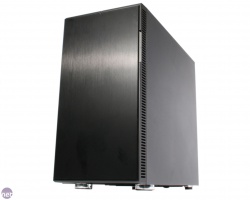 Fractal Design Define R4 |
See also
External links
- PCPartPicker - Computer component aggregator and comparison tool dedicated to picking out compatible computer components, allowing one to seamlessly create a desktop.
- Logical Increments - Formerly known as the "Falcon Guide", a good starting point to building a computer on a budget, components are grouped by price point.
- ChooseMyPC.net - Cookie cutter PC build generator, also hosts several guides and resources related to builds.
